How To Create Powerful Email Automation Tracks
Email automation is the key to building a successful digital business. An autoresponder email track is among your most powerful tools. But like any tool, the power lies in how you use it.
When a visitor subscribes to your email list, a degree of trust is transferred to your company. Acknowledging and nurturing this trust is your key to success.
In this guide we'll show you -
- The fundamentals of writing a strong automated email.
- Examples of how leading e-commerce companies are using email automation.
- How layout, design, copywriting and cadence can be used to increase performance.
What is Email Automation?
As opposed to an email broadcast, Sonia Simone of Copyblogger explains:
“Email automation is a sequence of email marketing messages that gets sent to subscribers in the order and frequency that you decide.”
In other words, it's a sequence of emails that are automatically triggered based on an action. This may be: Opting into your list, clicking a link, even opening an email.
Keeping a consistent tone and style in your emails is the first thing to remember. Do you want to use email automation to introduce subscribers to your best content? To have them sign up for an online course? Or to engage them with your automated sales funnel? Regardless, be natural and easy going.
We’ll touch on this later in this article.
It’s been studied: email automation increases the quality of leads that get passed to sales by up to 60%. Why is this? Because they have been qualified and nurtured through your engaging, and thoughtful sales process.
One that consistently delivers value to the viewer.
Where does this process begin?
The subject line of the email.
Email Automation Subject Lines
Your readers will come to anticipate your emails. Until then, your subject line is the only way to get them to engage with your company. It is your first opportunity to establish your tone and brand identity.
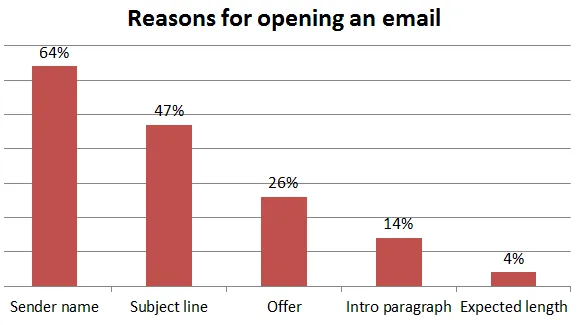
As you can see, the name of the sender is the only factor more important than the subject line. 35% of readers open based on the subject line alone.
Headlines with the best open rates have been shown to have between 6 -10 words.
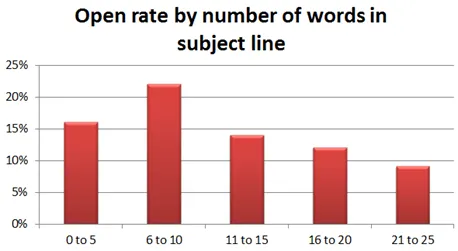
Sharing blog posts through email automation? Neil Patel recommendspasting the headline of your post into the subject line of the email. Even repurposing existing content into a email marketing strategy can help keep customers engaged.
But first, you need to send out a welcome email after viewers have subscribed to your email list.
The Welcome Email
The welcome email is like a digital handshake. It's an opportunity to thank your reader for subscribing. It's also a great time to lay out what they can expect from you in the emails to come.
Imagine a salesman just arrived at your door. You would want him to introduce himself first. To tell you what makes him an authority on the subject, before you heard anything else, right?
This is that brief interaction, whereafter the salesman walks away, and returns another day.
“Welcome to Casper”
Casper is an online retailer that delivers mail order mattresses. They do it without the complexity and jargon of the typical brick and mortar experience. They believe that sleep should be simple: a mattress, a pillow, a sheet.
They do a great job of greeting customers and introducing them to their business model.
This is the Casper welcome email.
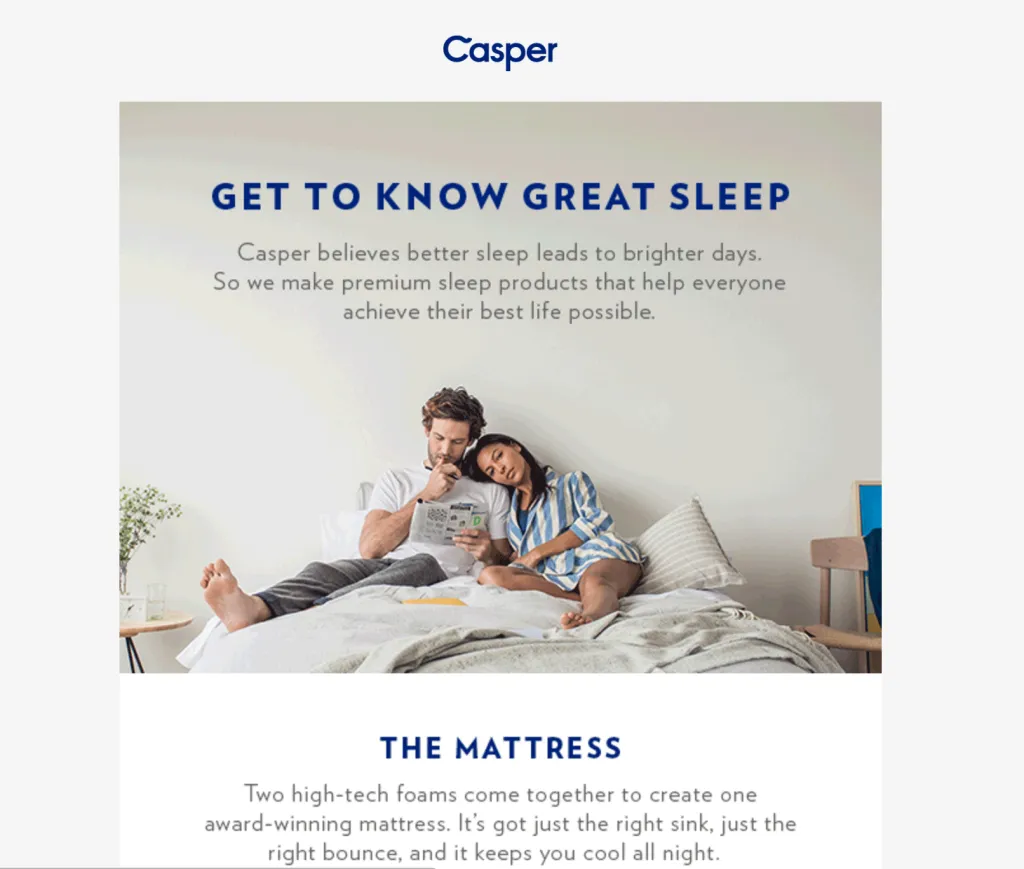
This email arrives within minutes of submitting an email, as it should. And it wastes no time in delivering the value that was alluded to on the website. They remind viewers of their product offering and provide a simple visual aid to show the end result.
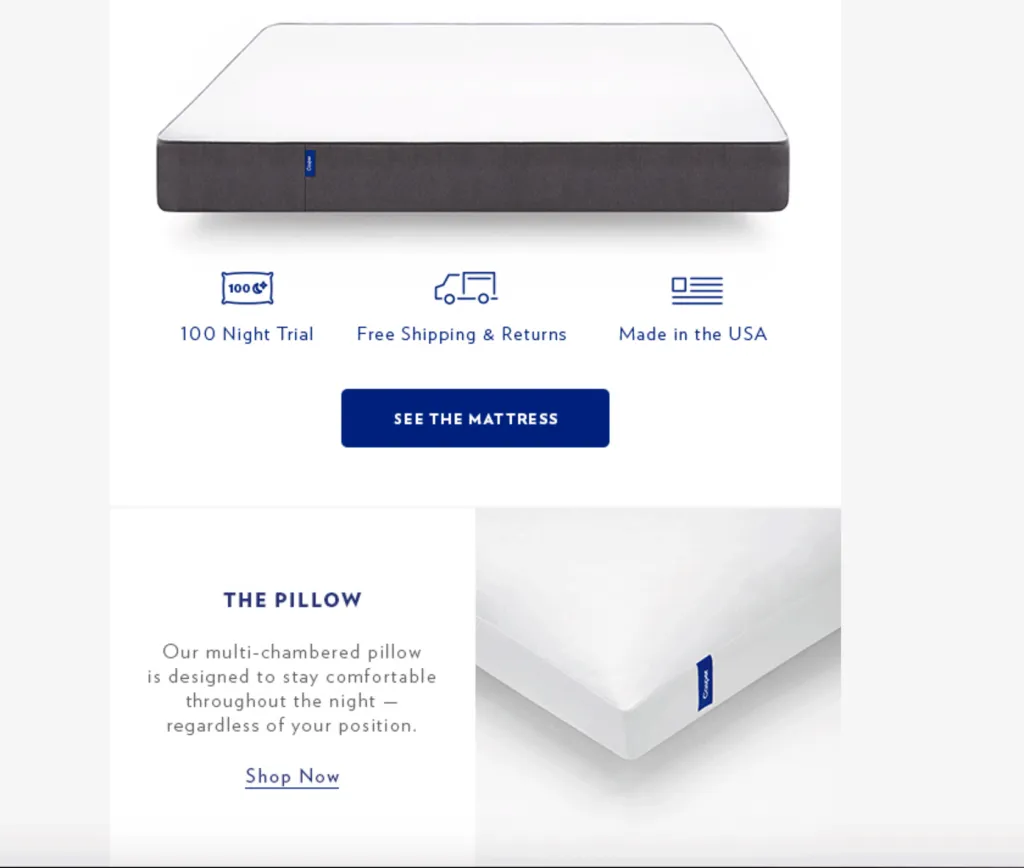
The company details the offering that their website provides, but in short form. The copy is simple, direct, and largely visual. Casper removes any sense of anxiety about purchasing their product.
The tone is light, educational and friendly. Friendly doesn't mean overly familiar - it treats you like an acquaintance, and no more.
“Can I just have a basic mattress like I had?”
‘The Paradox of Choice’ is eliminated for their customers by offering just one product. With a streamlined email automation process, the Casper brand positions itself as the obvious route to bedtime comforts. With free shipping, no less.
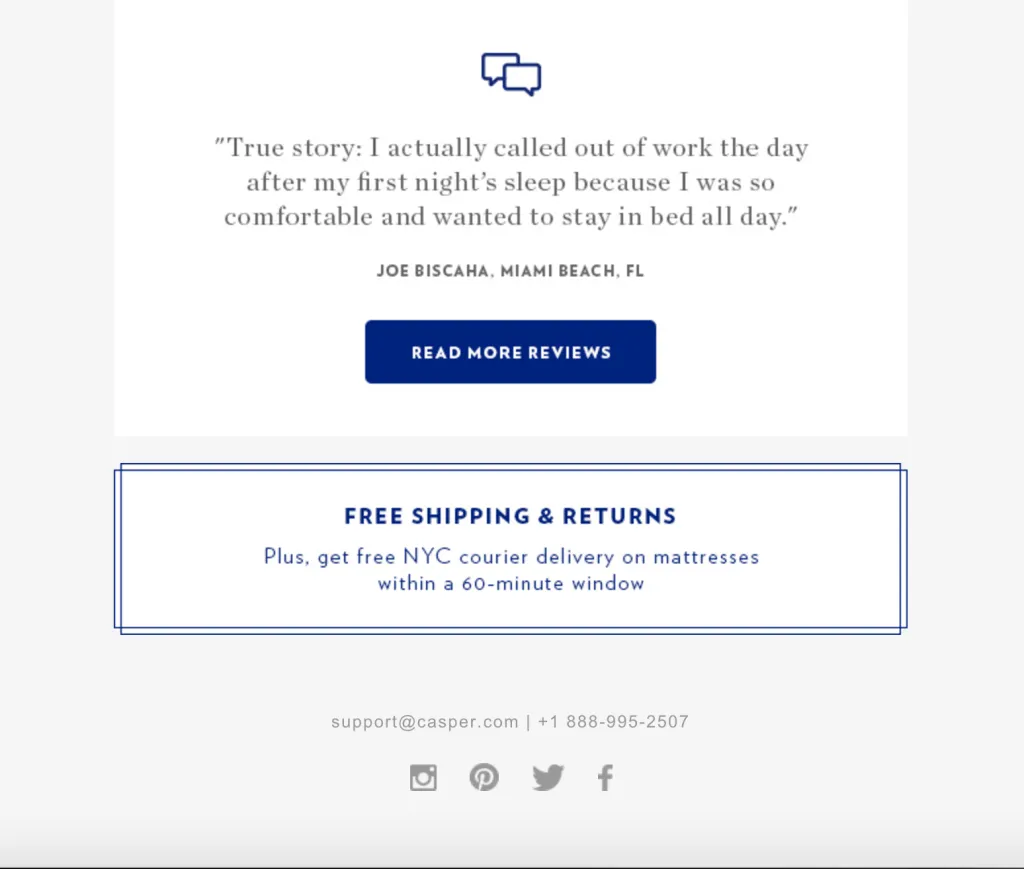
By scaling and redelivering the qualities of their website and brand, customers always know what to expect. Unforeseen design, layout, and brand messages are removed. This makes buying with Casper a seamless transition process from the website or email. The visual continuity creates a compelling and nearly invisible user interface.
The layout is crisp. The eye is guided towards a shining testimonial, playing upon the idea of social proof. The website proudly displays an encouraging plethora of positive reviews delivered on a micro-scale.
The psychology of referral marketing cannot be overlooked here. 92% of consumers trust the word of friends and family above all other forms of marketing. The email is finished with contact and social media icons. This gives readers a chance to share their experience with friends.
The ‘unsubscribe’ option helps the reader feel like they are in a pressure-free relationship, able to leave at any time.
How to Frame and Send an Automated Email Track
It’s time to ask yourself how many emails you’ll be sending to prospects. And to consider what those emails will look like. The short answer is this:
There is no set number of emails. Nor is there an exact way to format each email.
When you consider how to format your pages, look to the sparse text examples of Casper. Whether you’ll be using pictures or not, a ‘less is more’ approach is superior. You don’t want to overwhelm the reader.
Robert Bringhurst, typographer and author of The Elements of Typographic Style, has this to say about formatting your page text:
“Anything from 45 to 75 characters is widely regarded as a satisfactory length of line for a single-column page... The 66-character line (counting both letters and spaces) is widely regarded as ideal. For multiple column work, a better average is 40 to 50 characters.”
In this age of of decreased attention spans and punchy internet copy, keeping length short is key.
How Long Should My Autoresponder Be?
Your autoresponder will be as long as it needs to be.
It depends on a few factors:
- Your product or service.
- Your target buyer.
- The price of the product in question.
- What you have in your value ladder.
The rule of thumb is this: the higher priced the item, the longer the email sequence.
Anywhere from 5 - 10 emails in an automation sequence is standard.
What happens at the end of the sequence is up to you. You can push readers to opt-in to a new autoresponder. You can move them automatically based on actions taken. You can prompt them to visit a sales page. Or move in for a soft sell with a trial offer.
This part of the strategy must revolve specifically around your product and your buyers.
For example, say you’re Mercedes Benz. Given the high price tag on this luxury item, you’re never going to make a sales pitch over the internet. What you are going to do is tempt the reader; invite them to experience your product. Provide incentives through your automated email sequences and stay fresh in their mind.
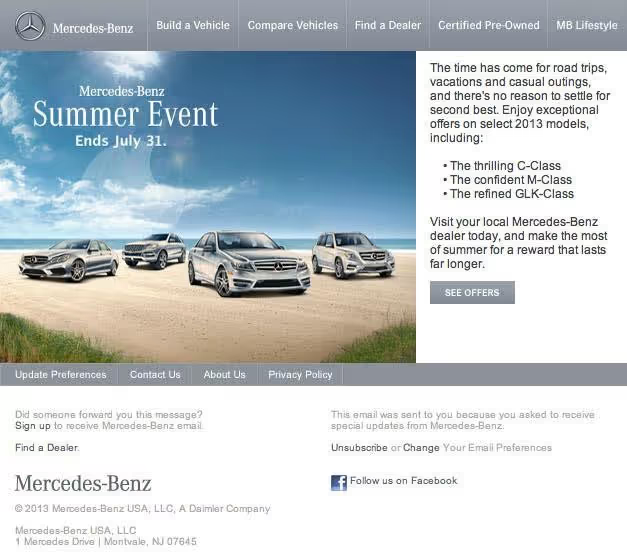
How Often Should I Send Emails?
A brand like Mercedes Benz can let weeks go by between emails. But that’s not you. Nor do you want to hammer away at prospective buyers every day.
You certainly don’t want to come off as ‘that guy’ through your email sequence. How annoying it is to receive your emails is inversely related to how valuable your content is.
For example: If I’m genuinely interested in your thought leadership and your repurposed blog posts, receiving your emails every two days is great.
Or you could send an email every six days so I’m sure never to receive your email twice in one week.
The Answer To This Question Lies In Email Cadence
According to Jessica Meher of Hubspot:
“Cadence is the 'pattern' of email – it includes the number of emails sent, the spacing between emails, the content sent, and the audience receiving the email."
Understanding what stage of your funnel the reader is in will determine how to reach out to them. Are these readers in the discovery phase, the consideration phases, or the conversion phases?
When you know the answer to these questions, engage in list segmentation. Once your list is divided by interests, you can create separate autoresponders for each. This makes shuttling subscribers along a fluid path towards your final sales much easier.
What makes this a smooth journey? Triggers within the email sequence. Says Elle Woulfe, Director of Marketing at Eloqua:
“You need to use those triggers as often as possible. If somebody shows that something is important to them – a piece of content or an offer – then we want to follow up with something that's relevant, but perhaps a level deeper."
How Do I Engage with Readers on This Deeper Level?
First, by speaking to them in a language they appreciate. This means good copywriting. It means driving action from your most engaged readers and segmenting the rest.
Automated email communication is most effective when you target a message to a specific group. By using polarizing language, your company will effectively separate the wheat from the chaff.
Using actionable and emotionally driven language, your message speaks right to what matters:
The needs, wants, desires, and pain points of your audience.
Seth Godin defines marketing as "… the art of telling a story that resonates with your audience and then spreads."
As in all digital marketing campaigns - copywriting, automation and storytelling are critical to create success. The human brain is wired to soak up stories and derive meaning from them.
So don’t be boring. There’s nothing worse than being caught in a tedious conversation, right?
This means keeping emails just brief enough to share your value. Short, punchy content with great impact is what readers want from you. Do not be presumptive with their time once you have their email. Adopt a ‘get in, get out’ mentality.
Also: map out and storyboard your email sequence. Prior planning will go a long way towards providing crisp emails that never ramble on.
What Does a Good Follow-Up Email Look Like?
With that in mind, let’s take a look at Wayfair. Wayfair is an e-commerce site that’s been taking the wind out of Amazon’s sails. They're boasting billion dollar figures in the online homewares market.
They provide a nice email marketing example of a follow-up email:
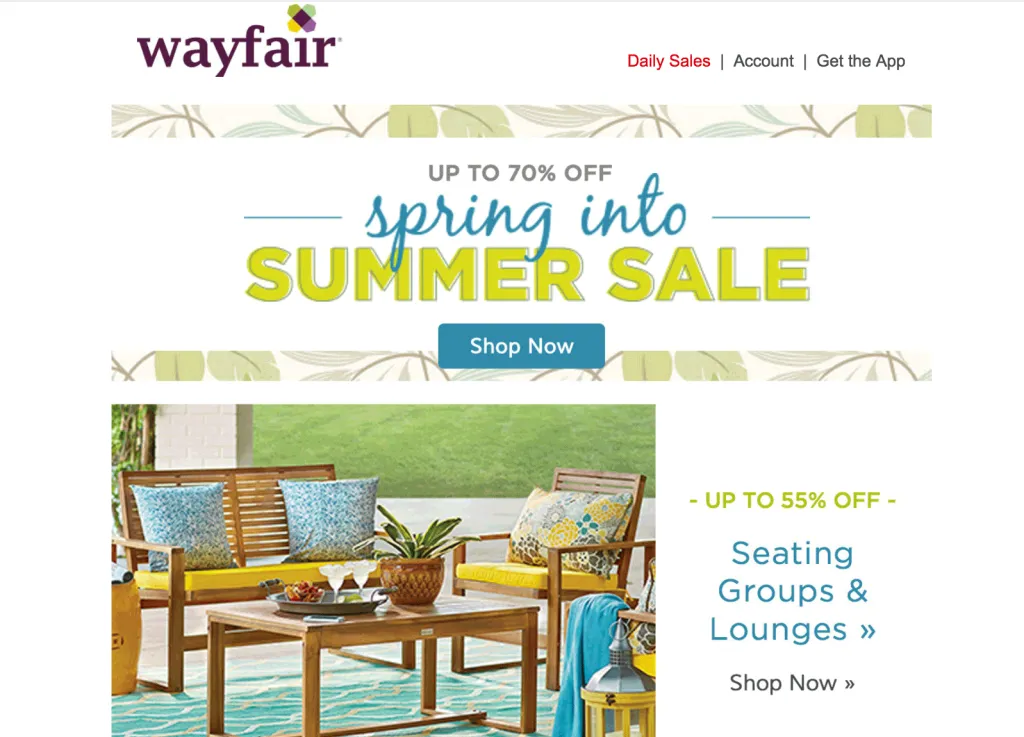
The goal of the follow-up email is to show what makes your company outstanding. Demonstrate your quality by promising, and delivering, great values now and in the future. But be clever about it.
Wayfair does an amazing job of re-creating the fun, playful atmosphere of their website. They focus on displaying consumer savings, allowing the reader look forward to great value. It also heightens the anticipation of upcoming summer fun.
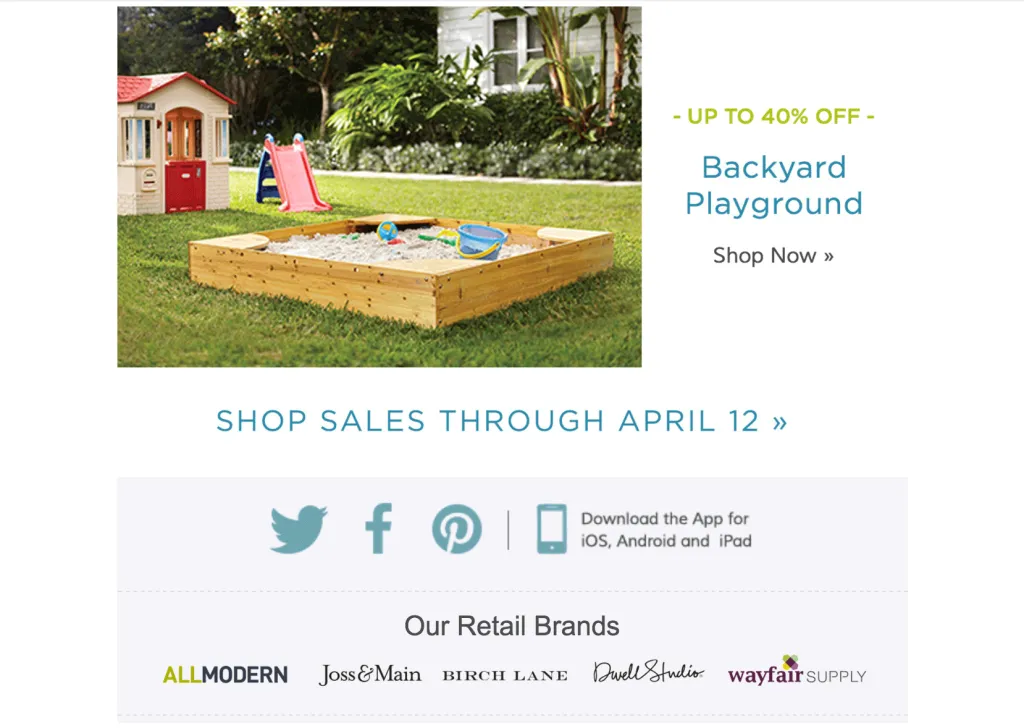
The email establishes a sense of value through hyperbolic discounting, it then establishes scarcity. Not only is summer fast approaching, but the sale will end in April!
By telling readers that the sale will close, Wayfair creates a deadline. The open loop of the “Spring Into Summer Sale” visual storyline now seems fleeting. The reader knows they must take action.
Creating action is one of the fundamental components of the automated email marketing. Action might be bringing an on-the-fence Benz buyer into the showroom for a test drive. It might be to have the reader download a qualifying lead magnet. Email automation templates are great assets for pushing prospects to qualify themselves within your marketing funnel. Regardless if they’re saleable now or later.
It’s important to note that Wayfair cites their retail brand affiliates at the bottom of the page. This is another smart application of social proof. By reminding readers that the products are brand name, Wayfair invokes brand loyalty. This speaks to a direct string of associations consumers have to brand identities. A great example of persuading subscribers with a combination of price and consumer psychology.
The Takeaway
You can easily create a powerful B2C email marketing strategy. Understanding the way readers will interact with your email automation is the key. Your first goal is always to deliver consistent value by way of great copy and a branded message.
Understand the mindset of your subscribers within each stage of your marketing funnel. Targeting readers with ideas relevant to them keeps them engaged. More importantly, it keeps them excited for the next email in your series.
Also ensure your email layout and visual design make reading and buying effortless. As we've seen, a welcoming flow of text and images promote an easygoing user experience. A firm grasp of consumer psychology will make your CRM and automated email sequence the powerhouse tool you can bank on. Once your readers trust you to provide what they want, you can trust your autoresponder to do the rest.